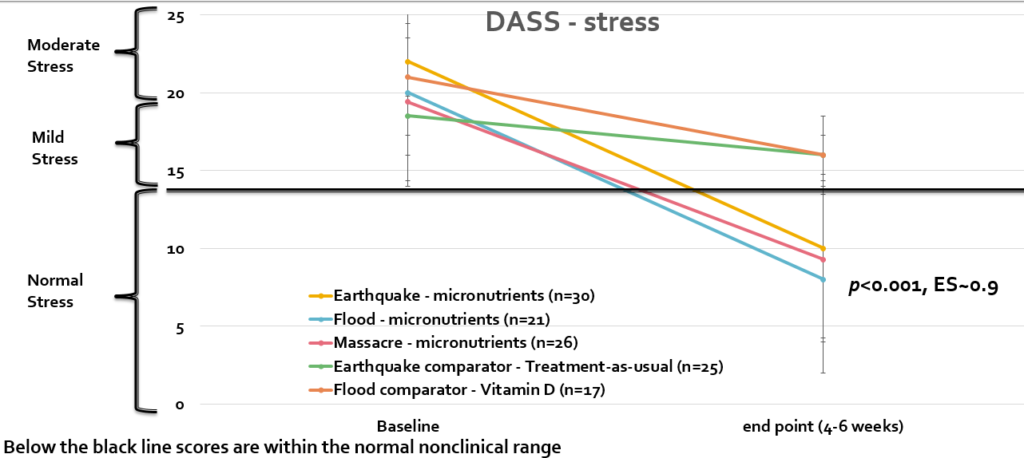When her son Michael told her in June that he was being transferred to the Osborn Correctional Institution from a prison in Newtown, Dorothea Ferrigon thought his two-year ordeal was almost over.
Osborn’s location in Somers was much closer to the family’s Bloomfield home, which meant it would be easier to visit him. Even better, he’d been placed on a waiting list for a halfway house that would likely be in the Hartford area. His release, it appeared, was imminent.
But then COVID struck the prisons, the state Department of Correction halted visitations, and the family worried about “Big Mike,” who had both diabetes and asthma.
What they didn’t know is that when DOC officials transferred him to Osborn, the 44-year old former Bloomfield High School linebacker was going to the prison with more COVID-19 deaths than any other in the state system.
The previous month, the facility was locked down after officials began mass testing and found 105 asymptomatic cases of the virus.
The next time the family saw him was after a doctor at St. Francis Hospital called them on the morning of Nov. 18 to tell them that after nearly 30 days on a ventilator, Ferrigon was losing his battle with COVID.
The doctor asked them the question no parent ever wants to answer — should they remove their son from the ventilator?
“He was just lying there with all those tubes in him and the machine breathing for him,” his father, Franklyn Ferrigon, said during a recent interview in the family’s living room. As Franklyn Ferrigon spoke, he looked toward the wall at a giant mural of Michael holding his football helmet and wearing his red No. 70 Bloomfield High jersey, a big smile on his face.
“He was already gone.”
Anonymous deaths
Michael Ferrigon died an hour after doctors removed the ventilator — just a few months before wrapping up a two-year sentence for third-degree burglary, breach of peace and violating probation.
He was the sixth prisoner at Osborn to die from COVID. Another inmate at Osborn would die just weeks later — making it the prison with the greatest number of deaths in the system.
DOC announced the 19th inmate death from COVID earlier this week: Harold Alling, the first prisoner to die who had not yet been convicted of a crime. Alling was being held on $155,000 bond for child pornography charges and was due back in court in March.
The one-page news release announcing Alling’s death followed the same format as the previous 18 — the age of the inmate, the charges against him, and his sentence. It didn’t give the dead man’s name.
The CT Mirror obtained the names of the men — they have all been men — who have died of COVID in Connecticut’s prisons and is publishing them to encourage a better understanding of how the pandemic has impacted the state’s incarcerated population.
Most of the dead prisoners were either Black or Hispanic, like 72 percent of the larger prison population. The youngest was Harlan Green-Govan, a 44-year-old Black man who appears to have caught the virus at Osborn. The oldest were two 74-year-olds, Edward Allen, who was white, and Frederick Gallman, who was Black. Both also appear to have contracted the virus at Osborn.
Many of the dead on this list committed heinous crimes — murder, arson and rape — and were serving life sentences. In some cases, they didn’t have family members — like Ferrigon did — visiting them or asking prison officials about their status. Most died alone in hospitals, and few had obituaries.
But none of them was sentenced to death.
Although not much is known about many of these men — particularly those who had been in prison for many years — some of their stories raise questions about the state’s ability to protect its most medically vulnerable prisoners, particularly when it came to inmates with pre-existing conditions, like Michael Ferrigon, who were held at a prison known to be infested with COVID.
An analysis of the deaths and each inmate’s movement files through the prison system show that almost three-quarters of them contracted the virus at one of two prisons — Osborn or MacDougall-Walker in Suffield.
Half of the men were under 60 years old when they died and normally wouldn’t have been among those considered to be most susceptible to the virus, which has been more deadly for those over the age of 65, if not for their congregate setting.
Since the onset of the pandemic, advocates have called on the state to release people from prisons and jails to protect them from COVID-19. The state, meanwhile, wary of compromising public safety or straining community resources already under pressure from the pandemic, has taken a more cautious approach to releases.
There were 3,317 fewer people locked up in Connecticut on Jan. 27, 2021 than there were on March 1, 2020, mostly because fewer people are being sent to prison but also because of the state’s use of discretionary releases to send prisoners home or to halfway houses before their sentences end.
The Lamont administration said prisoners will be prioritized for vaccinations in the same group as residents of other congregate settings, such as psychiatric hospitals, but as recently as this week, state officials were not able to say when those immunizations will begin. The Hartford Courant reported that vaccinations for staff and the incarcerated population will begin next month.
The COVID vaccine came too late for Michael Ferrigon, however. Dorothea Ferrigon said she received a call on the morning of Oct. 15 from someone at Osborn informing her that “Michael was having breathing problems” and was being transferred to Johnson Memorial Hospital in Stafford Springs, the closest hospital to the prison.
There was no mention he might have COVID, so she assumed his asthma was acting up. The family didn’t find out he had COVID until he was transferred to St. Francis Hospital a week later.
“My biggest question is, how did he get it? I mean, he’s incarcerated, so he doesn’t get the chance to go to McDonalds or to a bowling alley,” his brother, David Ferrigon, said. “He is in there, so how is it possible for anyone to catch it unless it’s a new arrival or an employee? In either case, they should have been testing the employees and quarantining the new arrivals.”
‘What is happening at Osborn?’
Almost 3,650 Connecticut inmates had contracted COVID-19 as of Jan. 22.
Osborn Correctional Institution has had the second-highest number of cases of any in the prison system; 529 incarcerated people there have caught the virus. Only MacDougall-Walker Correctional Institution, the largest correctional facility in New England, where 622 inmates got COVID, has had more cases.
Those with family members incarcerated at Osborn watched in horror as infections multiplied there. Ashley Turner, whose partner is locked up at Osborn, said she almost expected him to contract the virus, which he did. Twice.
As the seasons changed and the pandemic dragged on, Turner kept asking, “What is happening at Osborn that’s not happening at the other facilities?”
Interviews with corrections staff and advocates with connections inside the prison reveal several theories about why Osborn has had such a high number of cases and deaths relative to other prisons and jails.
One is that the prison holds elderly incarcerated people in a geriatric unit, a group more likely to be susceptible to the virus. But only two of the seven men who have died from COVID after contracting the virus at Osborn were over 70. Both men — Frederick Gallman and Edward Allen — were 74.
Ferrigon was the only one of the seven who wasn’t a long-term resident at Osborn. The others had been there for years, one as far back as 2013, meaning they were likely assigned to the geriatric unit at some point.
Ferrigon was not the youngest Connecticut prisoner to die of COVID-19. Harlin Green-Govan was 44 when he died a few weeks after Ferrigon on Dec. 4 at Johnson Memorial Hospital. Green-Govan was the last COVID death at Osborn.
Prison staff who requested not to be named out of fear of retaliation say elderly incarcerated people were moved out of that unit in late spring after an inmate started showing symptoms of the virus, but the movement potentially sparked an outbreak. Some believe officials should have quarantined the entire unit instead of risking an outbreak by transferring people throughout the facility. Others blame the outdated infrastructure at Osborn, which opened in 1963. The prison has a combination of celled and dormitory housing units, but some of the celled units have bars, not metal doors, making it harder to contain the virus.
Other correctional facilities like Northern and MacDougall-Walker Correctional institutions, staff say, have “air exchangers” in cells, potentially making the virus less transmissible. Northern and MacDougall-Walker have been used by the DOC as COVID prisons, where inmates who test positive are transferred to try to stop the spread.
There are also questions about the facility’s labor limitations. Osborn has a critical shortage of health care staff. As of June last year, more than one-fifth of the 112 vacant health care positions across the DOC were at Osborn.
There have also been complaints about mask-wearing by corrections staff. Advocates and those with incarcerated family members have called out DOC employees for not wearing masks in prisons and jails. Commissioner Designate Angel Quiros told the CT Mirror in October that corrections staff were in compliance with the governor’s executive order if they were able to maintain 6 feet of social distancing within the correctional facility.
On Dec. 24, Quiros issued an administrative directive, attempting to crack down on errant or nonexistent mask wearing.
“Due to the present COVID-19 pandemic, Connecticut Department of Correction requires all DOC personnel to wear a mask that covers the nose and mouth as part of their work attire while working on DOC premises,” the directive reads.
Asked what changed between the interview with the Mirror in the fall and late December, DOC Director of External Affairs Karen Martucci said, “We know that congregate settings are at greater risk than the general community population. With that being said, it makes sense to put forth efforts that go above and beyond basic protections. Commissioner Quiros is looking to implement practices that minimize the spread of COVID-19 and keep people safe and healthy.”
Ferrigon’s death on Nov. 18 was the first inmate death since May, records show.
But as the holidays approached, community spread of the disease across the state increased, and as with other congregate settings, so did cases in prisons.
Five prisoners died in December, and six have already died in January. Experts say it can take up to a week for an infected person to start to show any symptoms. It usually takes weeks after someone is infected for deaths from COVID to start occurring.
The most recent rash of inmate deaths has occurred mostly at MacDougall, but there also have been three from the Bridgeport Correctional Institute — including the most recent, Harold Alling — which officials said had a major breakout a week or so after Christmas.
The 53-year-old Alling was sent to St. Vincent’s Hospital on Dec. 30, according to the DOC news release announcing his death. He died on Jan. 24. While it didn’t name him, the DOC news release did say he suffered from underlying health issues that made him more susceptible to contracting the novel coronavirus.
A virus that is nothing to play with
Michael Ferrigon’s death ended a spiral that started when he started using angel dust and other drugs several years ago, his family said. He was also diagnosed as a paranoid schizophrenic and taking medication for that, Dorothea Ferrigon said.
Despite being recruited to play football at the University of Connecticut, Ferrigon decided not to attend his state school. Instead, he got a degree from the Baran School of Technology in East Windsor while playing semi-pro football in the Hartford area.
Ferrigon was first arrested in 2006 and spent one day in jail, according to his DOC records. It is unclear what those charges were. He was arrested twice after that on separate charges of driving under the influence in 2013 and 2016. On the second occasion, Ferrigon also was charged with third-degree stalking. He served two months on the 2016 charges.
“The drugs messed his brain up,” Franklyn Ferrigon said. “Sometimes it would be raining, and he’d just go outside and stand there and look up in the sky.”
His last arrest, on Oct. 25, 2018, occurred while he was on probation from the second DUI.
Ferrigon and his father had just returned home from a meeting with his probation officer.
While his father went into the kitchen, Ferrigon went outside, unbeknownst to his dad, who described what happened next.
“My next-door neighbor said his daughter had just pulled into the driveway, and Michael jumped into the car and said he wanted to marry her,” Franklyn Ferrigon said. “Then he said Michael went into their house and that he had to pull out his gun when Michael came into the house.”
Ferrigon was charged by Bloomfield police with third-degree burglary and second-degree attempt to commit strangulation, court records show. After his arrest, he was moved to the Hartford Correctional Center and never left prison again.
He pleaded guilty in August 2019 and was sentenced to five years in prison, suspended after three years, court records show.
In addition to schizophrenia, Ferrigon also suffered from asthma and diabetes, his family said, which DOC officials knew because his medical conditions and the medications he needed were discussed at his sentencing hearing.
He was sent to the Garner Correctional Center in Newtown, a prison that specializes in treating people with significant mental health needs, where he remained until June 11, 2020, when he was transferred to Osborn, which was experiencing a COVID outbreak.
“Why would you take someone with asthma and put them in a prison that has a lot of COVID?” his brother, David, asked.
The DOC said it cannot discuss the transfer of a specific person, citing medical privacy laws. But Martucci said, “Osborn Correctional Institution is a medium security facility with 24-hour medical coverage, which provides the highest level of medical care for inmates throughout the system with significant medical needs.”
Medical staff at the prison echoed Martucci.
“We just have a lot of sick people,” said Indria Mitto, a nurse and medical discharge planner at the prison. “Osborn is convalescent home, Osborn is rehab, Osborn is acute hospital, Osborn is drug rehab and treatment, Osborn is psych. Osborn is everything.”
In a virtual press conference earlier this month, Mitto said, “discharge planning has been cut to the bone” in recent years. Inmates must have approved housing before they’re approved for discretionary release before the end of their sentence, so if halfway houses or specialized housing for elderly incarcerated people are full or have lost funding and closed, the department — and the inmate — is stuck waiting until a bed becomes available.
“They’re pretty much doing what they can do with what they have,” Mitto told the CT Mirror recently.
The last time David Ferrigon talked to his brother, sometime in September, he warned him to be careful.
“I knew that this stuff was going around. I didn’t know it was heavy there, but I told him to be careful. This virus is nothing to play with,” David Ferrigon said. “I just told him to take precautions, and he mentioned that someone had gotten sick. I told him I loved him, which is something I never did, then we got off the phone.”
‘I need to get you out of there.’
Carlos DeLeon was supposed to be going home.
Halfway through his two-year sentence for a nonviolent gun charge — a punishment he accepted to avoid the risk of a lengthier sentence at a trial — DeLeon had been approved to serve the rest of his time under supervision in the community.
But the DOC couldn’t find an appropriate home sponsor after they found a registered weapon in his sister Isabel DeLeon’s home, where he had been planning to go upon release.
So, DeLeon waited from his cell at Osborn Correctional Institution.
He started getting worried once he felt sick. He’d developed COPD after years of smoking, putting the 63-year-old at risk of complications if he were to catch COVID. He called Isabel.
“My first reaction was, ‘I need to bring you home, I need to get you out of there,’” Isabel said in a recent interview. She tried to get him released, explaining to officials that the firearm her husband owned was not in their home.
DeLeon’s cellmate then contracted the virus and was transferred to the hospital, leaving DeLeon alone, sick and scared. Isabel said he asked her to call the prison so he could get sent to the hospital. He was coughing blood.
Officials tested DeLeon for the virus on April 6. DOC records indicate he was transferred to the UConn Health Center on April 9, the same day his test results came back positive for COVID-19.
His family did not learn DeLeon had been transferred until Isabel called the prison and asked for an update. She visited DeLeon at the UConn Health Center just hours before he died. Hospital staff had intubated him. His body was shutting down.
Isabel reached out to other members of the family, including their other sister, Milagros DeLeon, so they could say goodbye over a video chat. Then the DeLeon family made the same agonizing decision as the Ferrigons: They agreed to take Carlos off life support.
DeLeon died on April 13. He was the first prisoner to succumb to the virus.
Isabel and Milagros are still grieving the loss of their brother. They miss going to breakfast after church, the Sundays where they’d share meals multiple times per day.
“We were inseparable,” said Isabel.
Eighteen families have lost loved ones since the DeLeons lost Carlos. Isabel and Milagros follow news reports of incarcerated people dying, even though it hurts them to know others share their pain — and that some people don’t place much value on the lives of prisoners.
“They think that just because they’re in jail, they don’t deserve compassion,” Milagros said. “They don’t deserve to be treated like they’re not human.”











